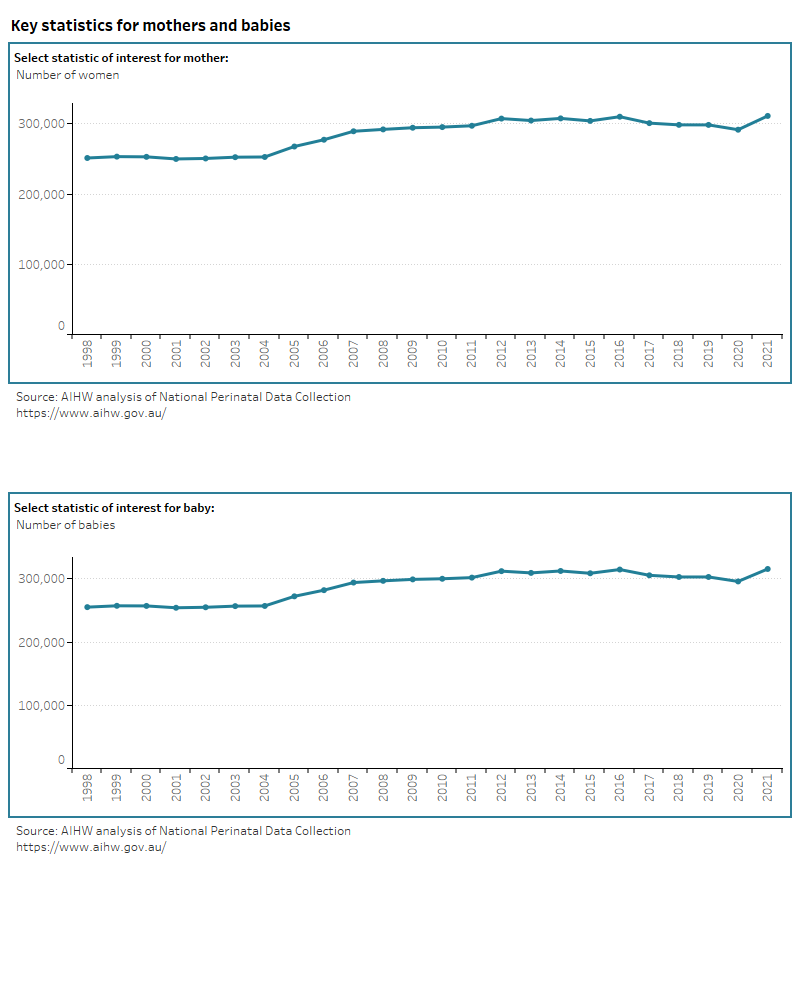Key statistics and trends
Many of the demographics and characteristics of mothers and babies in Australia are similar from year to year. However, trends over time can reveal interesting patterns. This section presents long-term trends for key topics, from 1998 (or earliest available year of data) to 2021.
In 2021, there were 315,705 babies born to 311,360 mothers in Australia. The ratio of male babies was 105.4 per 100 females babies (51% males compared with 49% females).
The birth rate was 61 per 1,000 women of reproductive age (aged 15 to 44 years) in 2021, an increase from 56 per 1,000 in 2020.
The number of mothers and babies has fluctuated over time. Between 1998 and 2021:
- the number of mothers ranged from 311,360 to 250,071
- the number of babies ranged from 315,705 to 254,326.
Over time, the following notable changes were seen:
- an increase in the average age of first-time mothers (from 28.4 years in 2011 to 29.7 years in 2021)
- a decrease in smoking at any time during pregnancy (from 15% in 2009 to 8.7% in 2021)
- an increase in caesarean section births (from 29% in 2004 to 38% in 2021)
- an increase in induction of labour (from 26% in 1998 to 34% in 2021).
Select the topic of interest and hover over the line graph (Figure 1) to view data on selected maternal and baby trends from 1998 (or earliest available year of data).
Figure 1: Key statistics of interest for mothers and babies
Bar chart shows maternal age group by selected topics and a line graph shows topic trends between 2011 and 2021.

For more information on the liveborn ratio of male to female babies see National Perinatal Data Collection annual update data table 3.2.


